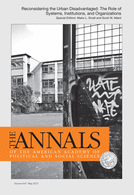¿Pueden los tribunales de drogas ayudar a reducir las poblaciones penitenciarias y carcelarias?
Este estudio analiza una serie de encuestas cumplimentadas por presos entre 2002 y 2004 para examinar las características de las poblaciones penitenciarias y carcelarias en los Estados Unidos, y analizar la experiencia de los tribunales de drogas. Más información, en inglés, está disponible abajo.
Suscríbase a las Alertas mensuales del IDPC para recibir información sobre cuestiones relacionadas con políticas sobre drogas.
Drug courts have been widely praised as an important tool for reducing prison and jail populations by diverting drug-involved offenders into treatment rather than incarceration. Yet only a small share of offenders presenting with drug abuse or dependence are processed in drug courts. This study uses inmate self-report surveys from 2002 and 2004 to examine characteristics of the prison and jail populations in the United States and assess why so many drug-involved offenders are incarcerated. Our analysis shows that four factors have prevented drug courts from substantially lowering the flow into prisons and jails. In descending order of importance, these are: drug courts’ tight eligibility requirements, specific sentencing requirements, legal consequences of program noncompliance, and constraints in drug court capacity and funding. Drug courts will only be able to help lower prison and jail populations if substantial changes are made in eligibility and sentencing rules.
Click here to read the full publication (restricted access).
Keep up-to-date with drug policy developments by subscribing to the IDPC Monthly Alert.
